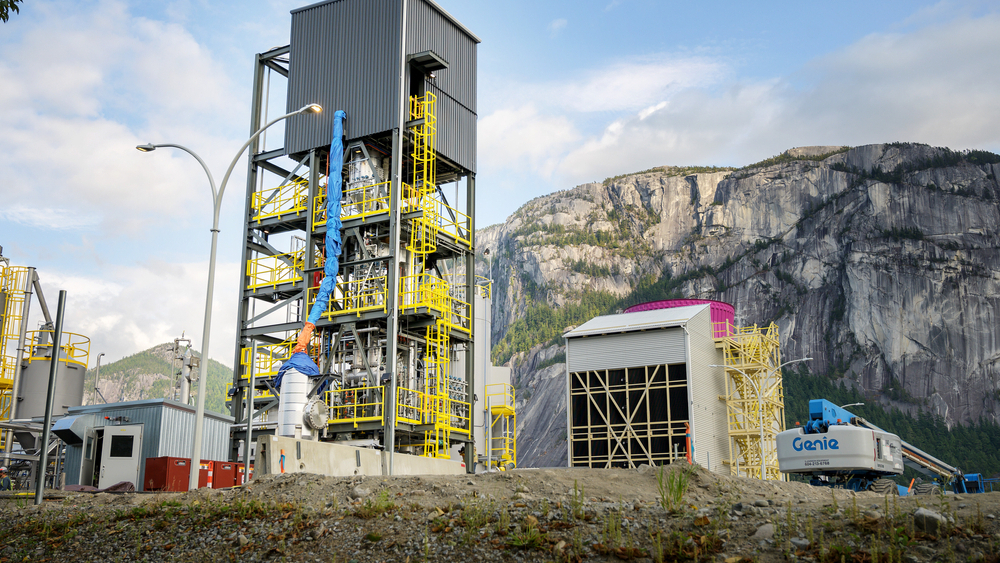
Investors eye carbon capture as part of transition finance
Institutional investors see green bonds as the safest investment route into this early stage technology
Carbon capture and storage (CCS) may become a necessary feature of transition finance for heavy, hard-to-abate industries, investors have told Net Zero Investor.
Transition finance generally means any form of financial support that helps high-carbon companies implement long-term changes to become greener.
It bridges the gap between traditional and sustainable financing as businesses begin the journey to net zero.
“We know that we won’t reach net zero by just reducing our emissions,” said Danielle Brassel, director of responsible investment at Zurich Insurance Company. “That means we need to sequester more carbon from the atmosphere by increasing investments in both nature-based solutions and carbon capture technologies.”
She added that the carbon removal capacity of current technology is still very low, but there is a lot of potential to scale it up.
The question for institutional investors is finding appropriate investment opportunities, given that the tech is still in “an early, R&D development phase”, having only “just got out of the venture capitalist phase”.
Such opportunities exist on “multiple fronts”, both as private equity and green bonds. Zurich’s private equity team is currently evaluating opportunities as and when they arise.
“In terms of green bonds, we already have investments in carbon capture as part of a company’s transition plan,” Brassell added. “It is an easy investment route.”
Canadian sovereign green bonds, for example, earmark investment in CCS as part of the use-of-proceeds.
Caution
While CCS could be an important part of the journey to net zero, Brassel is quick to stress a degree of caution when considering investments.
“It should never just be about capturing carbon while carrying on with business-as-usual,” she said. “Investors need to look very closely at what the carbon capture brings to the company. Is it a legitimate part of a transition plan or just a nice excuse to keep business as usual?”
Therefore, before purchasing green bonds that feature CCS elements, investors must have “a thorough understanding of the company’s overall transition strategy”.
The case for direct investment in CCS, via private equity, is still a little muddled. “I can't see how investments in a pure carbon capture play would work, because at the moment, at least from what I'm seeing or hearing, CCS technologies are not yet profitable,” she said.
At the group level, Zurich also purchases carbon credits.
What is CCS?
CCS involves the capture of carbon dioxide emissions from industrial processes, such as steel and cement production, or from the burning of fossil fuels in power generation.
This carbon is then transported from where it was produced, via ship or in a pipeline, and stored deep underground in geological formations.
The Intergovernmental Panel on Climate Change (IPCC) has highlighted that limiting future temperature increases to 1.5°C requires more than just increasing efforts to reduce emissions.
Certain hard-to-abate carbon industries also need to deploy technologies to remove carbon from the atmosphere.
CCS is one of these technologies and can therefore play a role in tackling global warming.
East versus West
“We’ve seen a fair amount of CCS technology companies come up in Asia, though the number pales in comparison to the West,” said Tan Huck Khim, head of alternatives at Fullerton.
Cleantech efforts in Asia are focused more on more practical and immediately applicable tech such as “graphite batteries”, which can reduce the amount of coal burnt in coal-fired power plants, as well as renewables and battery storage.
The companies developing CCS tend to be early stage start-ups, the most interesting of which, from an investment perspective, are for example those looking to “sequester carbon in concrete production”.
He added that the best carbon capture technology is still the “humble tree”, though CCS may take off eventually and possibly even “overtake trees” at some point in the future.
Fullerton’s “200+” net-zero related pipeline deals are mostly focused on transitional companies.
“A lot of money and effort has been spent on developing renewables,” Khim said. “But we're still not dealing with the elephant in the room, which is the middle space of transition finance. And that's where I think the biggest opportunity lies.”
Khim attributes the potential and importance of transition finance to the fact that many governments have set net zero targets without actually telling the companies what they need to do.
This “direction problem” is particularly acute in Asia, which have many small and medium enterprises involved in “dirty manufacturing processes and operations.”
“These companies have no idea how to transition and that's where I think we can help,” he said. “There’s been a lot of attention paid to investing in clean tech, electric vehicles and so on, and not enough to those who could make the biggest difference by transitioning heavy industries.”




